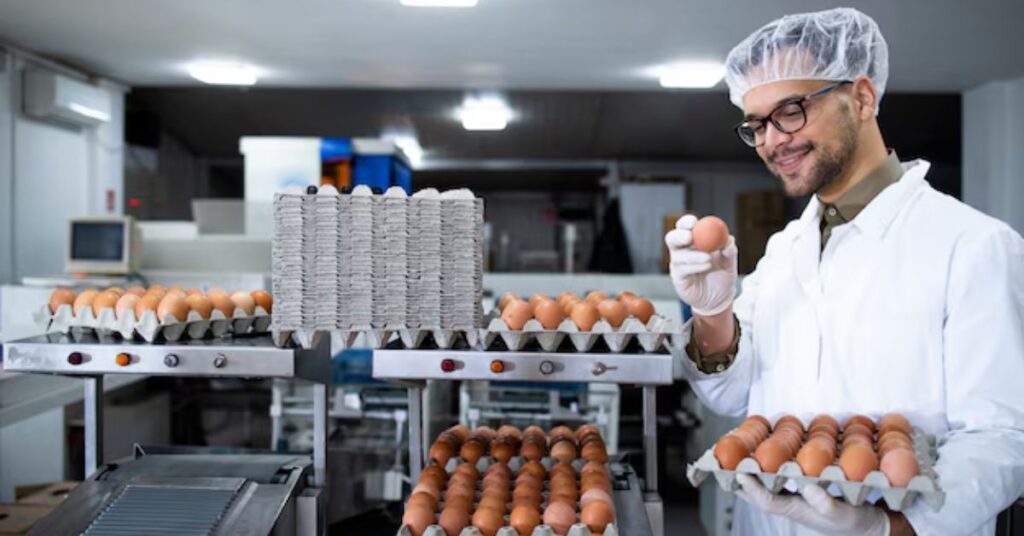Egg deleup Process biological trick of developing eggs is a fundamental part of reproduction, particularly in birds, reptiles and some mammals. Egg deleup Process intricate process starts with the formation of the egg cell and does not stop until the egg is laid or incubated and a new organism hatches. Having a grasp of the key phases of egg development is key to understanding fertility, reproductive success, and factors that influence egg health. This article will detail the whole process of egg development including oogenesis, the synthesis of various egg parts, and the role of external factors.
Pause to reflect on your knowledge of the process of oogenesis.
Before we understand the role of oocytes, let us start with oogenesis, the first stage of egg development. In the ovaries where the oogenesis yields primary oocytes maturing into ovum that are ready for fertilisation. While the egg creation rate decelerates significantly with age in an organism, oogenesis is initiated during foetal development and continues through reproductive age. In mammals, birds and reptiles, follicle-stimulating hormone (FSH) (produced by the pituitary gland) is critical for the maturation of primary oocytes to secondary oocytes. These hormones regulate the size and maturation of the oocyte by impacting oestrogen secretion, which is crucial for the egg development process. An egg ripens within ovarian follicles, and the
Nutrition Stores: Formation of the Yolk
Once the egg cell is fully developed, the next stage of its development involves the accumulation of nutrients, especially yolk. The embryo draws most of its nourishment from the yolk before it has developed sufficiently for the egg to absorb nutrients from the outside world. Proteins, lipids and other important nutrients are generated and accumulated in the cytoplasm of an egg cell to begin the development of yolk.
The yolk of birds and other animals is packed with vitellogenins, proteins that supply the embryo with building blocks. They also contain lipids, primarily triglycerides, which are a source of energy for the developing embryo. During yolk accumulation, the embryo has enough reserves for its development.
Also Read: https://everscroll.org/category/BLOG/
Egg White (Albumen) Development
The albumen, or egg white, forms in conjunction with the yolk and is an essential component of the egg. Albumen is predominantly water and minerals along with proteins including ovomucin and ovalbumin. Besides nourishing the growing embryo with essential nutrients for its initial stages of cellular function, its primary role is to protect the yolk.
In addition, the albumen is a cushion that protects the embryo and the delicate yolk from mechanical damage. It helps to stabilize the contents of the egg during incubation or normal movement or small knocks. The proteins in the albumen are important for the creation of not only the embryo’s cell membranes, but other essential parts. Albumen also help keep the inner of the embryo preserved.
Formation of shell: Protective wall
The egg’s protective shell serves as a wall to shelter the developing embryo from external threats such as pathogens, environmental stress, and physical damage. The latter stages of egg development, which occurs in the uterus or shell gland in birds and reptiles, are when the shell (mostly calcium carbonate) is formed. The shell provides structure and hardness, which coincidentally gives the egg the protection that it requires while it is being incubated.
Many hormone and enzymes regulate the shell-formation process and calcium is required for proper shell formation. The laying female needs calcium in her diet in order to have a strong, durable shell. And the shell has pores through which gases can exchange, including oxygen.
How Egg Development Is Affected by Enviromental Factors
Eggs might have considerable environmental sensitivity, and exposure to certain conditions can be detrimental to egg health and viability. Temperature, light, humidity, and exposure to chemicals or contaminants can all affect the development and maturation of eggs. Temperature heavily dictates the rate at which eggs grow. For organisms such as birds and reptiles, the accurate treatment of eggs can be related to factors like the best-available incubation temperature. Excessively high & low temperatures can cause developmental defects & reduced hatchability or embryo death. Controlled incubation environments, including incubators, are often used in agricultural and scientific contexts to preserve the optimal temperature for the growth of eggs.
Conclusion(Egg deleup Process)
The egg development process is a complex series of biological events that are fundamental to the reproductive success of many species. From the production of oocytes (egg cell), to yolk deposit, albumin production, and development of protective shell at each stage in the process is crucial in guaranteeing the survival and growth of the embryo. There is a need for awareness of environmental factors (eg: temperature, humidity and light) that can significantly affect egg development to optimise reproductive success.
Egg-dependent organisms need a controlled environment for proper embryonic development. Incubators and other technologies have been developed to ensure the health of eggs for agricultural and conservation purposes. By thoroughly comprehending.
FAQ (Frequently Asked Questions)
What is oogenesis? Why is this important in the development of eggs?
In females, the process is called oogenesis (egg formation). It is for the maturation of primary oocytes to eggs ready for fertilization This process is vital for reproductive success and fertility.
How does the yolk contribute to the growth of the egg?
The yolk acts as the main source of nutrients for the developing embryo, offering proteins, lipids, and other essential nutrients during the initial phases of growth.
What role does the albumen play in egg development?
The albumen surrounds the yolk to protect it, and it also supplies key nutrients and hydration for the embryo, contributing to the processes of cell division and differentiation early in its development.
Effective Microorganisms Enhance Egg Survival.
The egg shell offers a physical barrier to bacteria and damage, and also allows for gas exchange essential for embryo survival.
What environmental determinants could influence embryonic development?
Eggs can be sensitive to environmental factors such as temperature, light, humidity, and exposure to pollutants or chemicals, making controlled environments necessary for successful growth.

